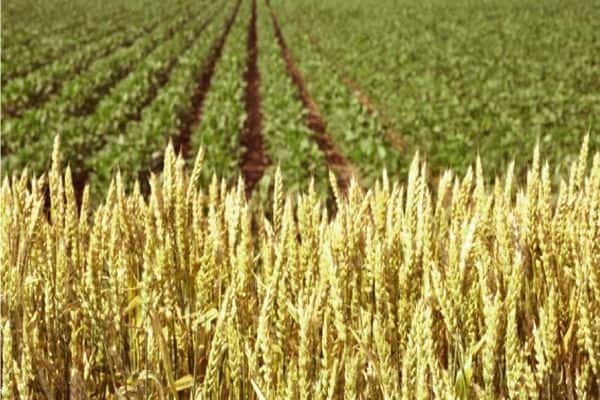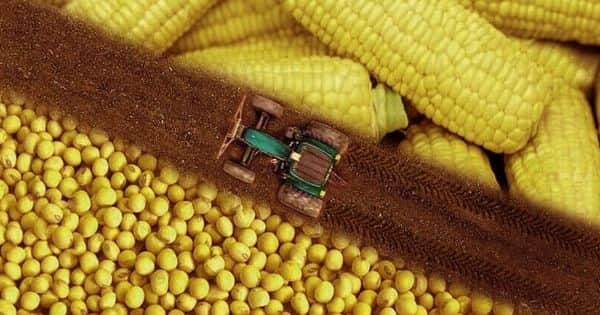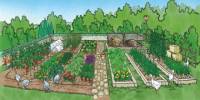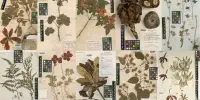Brazil’s grain production more than quadrupled between 1980 and 2016, and the country is now the world’s largest soybean exporter and second-largest corn exporter. Cropland expansion and double-cropping, or harvesting two crops, such as corn and soybeans, from the same field in a single year, were the two main drivers of this increase in food production.
Jing Gao, assistant professor of Geospatial Data Science in the University of Delaware’s College of Earth, Ocean, and Environment (CEOE) and Data Science Institute (DSI), was one of the study’s co-authors, along with researchers from China and Brazil.
Gao contributed to the team’s efforts by analyzing agriculture census-related data from the Brazilian Institute of Geography and Statistics (IBGE) and identifying spatial patterns and changes that occurred over time in three key agricultural regions in Brazil in terms of food production: the Centre-West, Southeast-South, and Matopiba regions.
“You don’t know what’s going on until you analyze data,” Gao explained. “This was the first time this unique dataset was examined from this perspective to demonstrate how the system worked. Understanding how the recent increase in Brazil’s grain productivity was achieved provides insight for developing future sustainable food production.”
While cropland expansion has long been recognized as one of the drivers behind the increase in Brazil’s agricultural output, a new study published in Nature Food quantifies for the first time the impact that double-cropping also had on helping Brazil achieve its national grain boom.
In 2016, these three regions accounted for 79 percent of national soybean production and 85 percent of national corn production, covering 36 percent of Brazil’s territory. The Centre-West region experienced the greatest increases in production and cropland expansion. As a result, the Centre-West surpassed the Southeast-South as the country’s dominant grain producer, producing 46 percent of the nation’s grain compared to 29 percent for the Southeast-South.
Grain production in the Centre-West has increased due to cropland expansion and double-cropping.
From 2003 to 2016, contributions from double-cropping increased from 19% to 33% in the Centre-West. While cropland expansion was largely responsible for the increase in soybean production (soybean fields account for more than one-third of Brazil’s cropland), the increase in corn production could be attributed to the practice of double-cropping. From 2003 to 2016, the agricultural area for second season corn—or corn is grown after the first season soybean is harvested—increased from 26.3 percent to 66.6 percent in the Centre-West, and in 2012, the second season corn crop surpassed the first season corn crop as the main source of corn nationwide.
Tao Lin, the corresponding author of the paper and a professor at China’s Zhejiang University’s College of Biosystems Engineering and Food Science, said it was interesting to see how agricultural developments in these regions took different approaches to agricultural expansion and double-cropping.

“The Centre-West region has experienced rapid cropland expansion in the last few decades, and after the new cropland was created, farmers decided to significantly increase the double-cropping area,” Lin explained. “Meanwhile, the contribution of double-cropping in the Southeast-South region is more than 50%, which has had a much greater impact than cropland expansion in recent times, because there is not much arable land remaining for further expansion in this commercial agricultural region.”
The researchers also discovered that the strongest driver of this rapid increase in grain production has been the rising global demand for Brazil’s corn and soybean exports.
It is critical to understand how double-cropping has assisted a country like Brazil, which plays a critical role in the global food supply chain, in increasing agricultural productivity while limiting the conversion of natural land for agricultural use and possibly offsetting some of the negative environmental impacts that cropland expansion may have.
Between 2003 and 2016, double-cropping in Brazil offset the equivalent of approximately 76.7 million hectares of arable land for corn production, or more than twice the annual harvested area of corn in the United States.
While not every country grows food in an area of the world where double-cropping is possible or even feasible, for other grain-growing pantropical countries, double-cropping could be a solution to increase grain production without expanding cropland over natural landscapes.
















